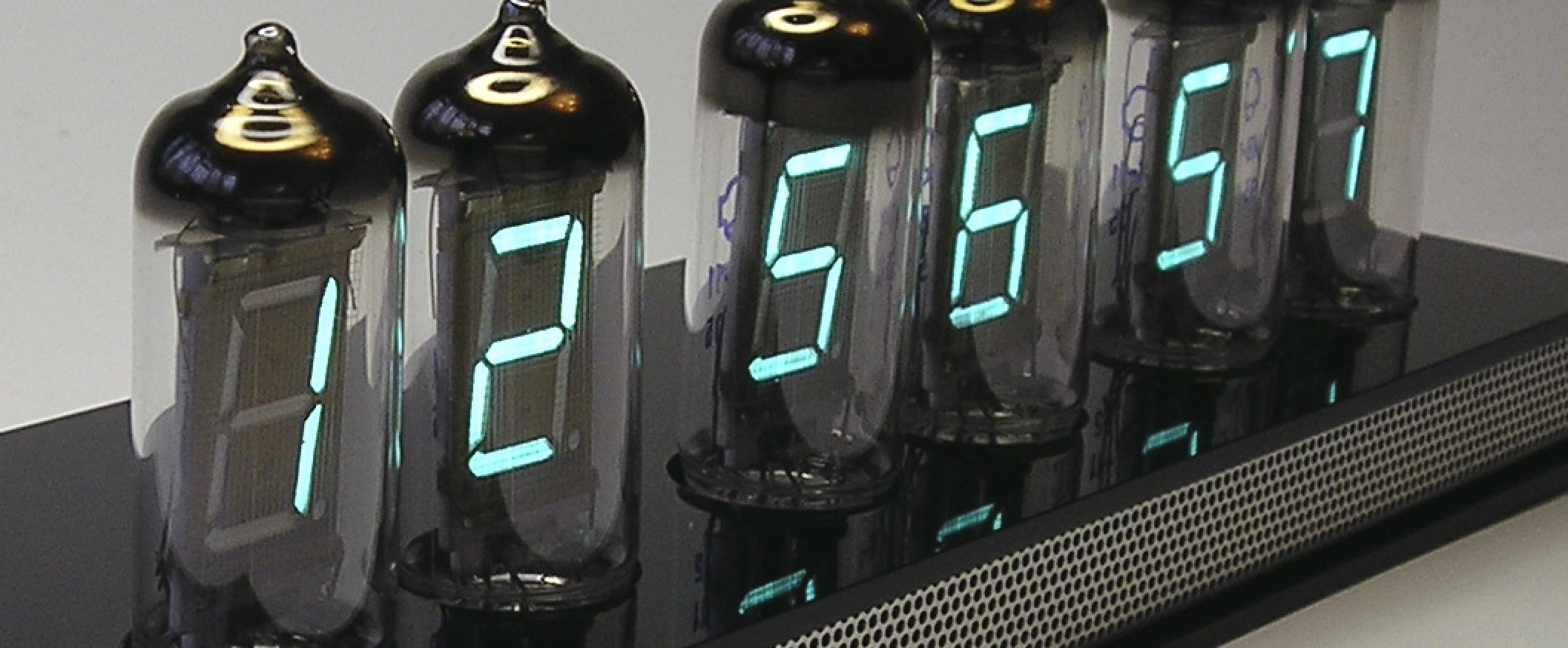
A vacuum fluorescent display (VFD) is a display device used commonly on consumer-electronics equipment such as video cassette recorders, car radios, and microwave ovens, specially in the late 1980s
A VFD operates on the principle of cathodoluminescence, roughly similar to a cathode ray tube, but operating at much lower voltages. Each tube in a VFD has an anode coated phosphor that is bombarded by electrons emitted from the cathode filament. In fact, each tube in VFD is a triode vacuum tube because it also has a mesh control grid.
Unlike liquid crystal displays, a VFD emits a very bright light with high contrast and can support display elements of various colours. Standard illumination figures for VFDs are around 640 cd/m2 with high-brightness VFDs operating at 4,000 cd/m2, and experimental units as high as 35,000 cd/m2 depending on the drive voltage and its timing. The choice of color (which determines the nature of the phosphor) and display brightness significantly affect the lifetime of the tubes, which can range from as low as 1,500 hours for a vivid red VFD to 30,000 hours for the more common green ones.
VFDs can display seven-segment numerals, multi-segment alpha-numeric characters or can be made in a dot-matrix to display different alphanumeric characters and symbols. In practice, there is little limit to the shape of the image that can be displayed: it depends solely on the shape of phosphor on the anode(s).
The first VFD was the single indication DM160 by Philips in 1959. The first multi-segment VFD was the 1962 Japanese single-digit, seven-segment device. The displays became common on calculators and other consumer electronics devices. In the late 1980s hundreds of millions of units were made yearly.

